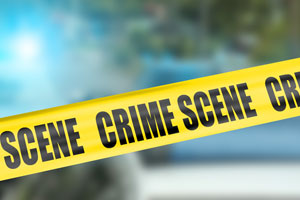Prosecutors in the trial of Quentin Bealer, accused of killing a 14-year-old girl in Red Bluff, California, have relied on a number of experts to help them build their case. The jury has heard the testimony of a forensic pathologist, a DNA analyst, and a sexual assault nurse examiner. The most interesting expert testimony, however, has come from two dueling forensic entomologists who are relying on blowfly eggs to establish the time of the victim’s death.
Evidence Against Bealer
Marysa Nichols’ body was found near Red Bluff High School on February 28, 2013, two days after she was reported missing. Authorities began to focus on Bealer after examining security camera footage that showed him walking near the school and in the school parking lot on the day Nichols disappeared. The footage showed Nichols in the same area a few minutes later.
A physical education teacher testified that he saw Nichols and Bealer walking together near the creek behind the high school. He did not observe any physical contact between them.
The forensic pathologist who performed Nichols’ autopsy testified that she was strangled to death with the tank top she was wearing on the day she went missing. The tank top was tied in a knot around her neck when her body was found.
The pathologist observed no evidence of a sexual assault. A sweatshirt and boy’s underwear found near the body were not connected to Bealer.
A sexual assault nurse examiner took a DNA sample from Bealer. She saw no scratch marks or other injuries on his face, although she noted some old scratches on his arms.
A laboratory analyst who tested the tank top found Bealer’s DNA on the knot. The analyst testified that she would expect to find DNA on the knot from the person who tied it unless that person was wearing gloves.
The police questioned Bealer after he turned himself in. He was under the influence of narcotics at that time. Bealer denied having any knowledge of Nichols.
The prosecution contends that Bealer’s answers were inconsistent. The defense attributes the inconsistency to the fact that Bealer was high. The defense blamed the police for questioning a suspect while he was under the influence of drugs.
At some point after he was jailed, Bealer telephoned his mother and admitted that he lied during his interview when he told the police that he had not seen Nichols. He told his mother that Nichols walked behind him for a time and that he gave her a cigarette. The jail recorded that telephone conversation and prosecutors played it for the jury.
Bealer testified that he went to the high school to see his own daughter, then walked along a path behind the school where he used drugs. He said that he saw Nichols and that she asked him for a cigarette and a light. He said he gave her the cigarette that was in his mouth. The defense contends that passing the cigarette to Nichols accounts for the DNA transfer.
Nichols’ mother and step-father testified that Nichols did not smoke and that she tried to persuade them to quit smoking. They also denied that cigarette butts and a nicotine patch found in Nichols’ room after she disappeared belonged to Nichols.
Experts Debate Time of Death
The prosecution wants to prove that Bealer killed Nichols when he encountered her on February 26. Based on rigor mortis, a deputy coroner testified that Nichols had been dead for 24 to 36 hours before her body was found on February 28.
Bob Kimsey, a forensic entomologist, examined the contents of a swab that was taken from Nichols’ mouth. He determined from the swab that blowfly eggs were present in Nichols’ body.
Blowflies are attracted by the gases released from a newly deceased body. They usually lay eggs near the nose and mouth. The eggs then go through stages of development. Forensic entomologists try to estimate time of death from the developmental stage of the blowfly eggs.
Kimsey testified that the most mature blowfly eggs had been developing for 30 to 40 hours. He acknowledged that he did not know when the blowflies entered the body to lay their eggs. He also acknowledged that a number of factors can affect egg development, including temperature, environmental conditions, and the fact that Marysa’s body was partially covered by a foam pad. Finally, Kimsey agreed that the eggs continued to develop during the 24 hours between the time the body was discovered and the time the swab was collected and frozen.
Testifying for the defense, forensic entomologist Timothy Huntington said it was more likely that Nichols died in the late evening hours of February 27, a day after she was seen with Bealer. Huntington explained that maggots should have hatched from the eggs if Nichols died any earlier than mid-afternoon on the 27th.
Huntington faulted Kimsey’s analysis for failing to take account of the warmer temperatures where the body was stored before the swab was taken. Those temperatures would have contributed to faster egg development.
Huntington acknowledged that Nichols could have been killed on February 26, but he said that was only possible if the body was completely covered so that blowflies could not reach it to lay their eggs. Other evidence established that some of Nichols’ body was covered but most of her head was exposed.
Before the jury considers the conflicting scientific testimony and the other evidence in the case, the judge will need to resolve the defense attorney’s request to present evidence of tips that the police received concerning Nichols’ disappearance. The defense contends that the police immediately focused on Bealer and failed to investigate tips that could have led them to the real killer. The case may reach the jury at the end of May or the beginning of June.




